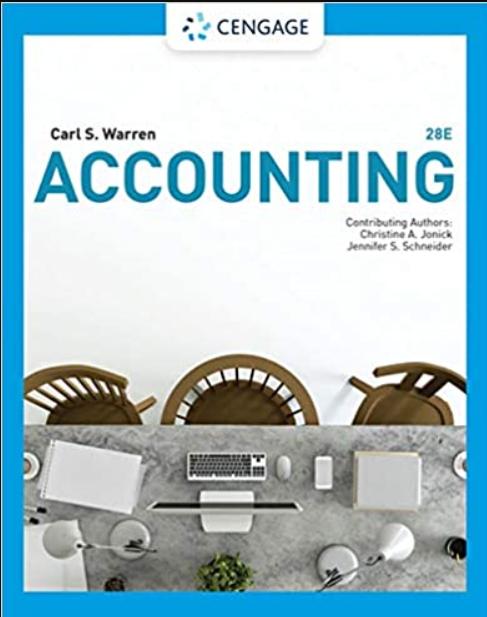Question
In 2022, Sargent Company experienced a major casualty loss. The roof of its warehouse collapsed in an ice storm and destroyed its entire inventory. The
In 2022, Sargent Company experienced a major casualty loss. The roof of its warehouse collapsed in an ice storm and destroyed its entire inventory. The company began the year with inventory of $700. It made purchases of $6,240 but returned $80 worth of merchandise. Sales prior to the ice storm were $10,400. Sargent must use the gross profit method to determine inventory on hand on the date of the casualty. The following is an excerpt of its income statement for the last three years.


Requirement a. Assume that Sargent uses the most recent three years of net sales and cost of goods sold to determine its historical gross profit. What are estimated cost of goods sold, estimated gross profit, and estimated ending inventory?

Requirement b. Assume that Sargent uses the most recent two years of net sales and cost of goods sold to determine its historical gross profit. What are estimated cost of goods sold, estimated gross profit, and estimated ending inventory?
 Requirements a. Assume that Sargent uses the most recent three years of net sales and cost of goods sold to determine its historical gross profit. What are estimated cost of goods sold, estimated gross profit, and estimated ending inventory? b. Assume that Sargent uses the most recent two years of net sales and cost of goods sold to determine its historical gross profit. What are estimated cost of goods sold, estimated gross profit, and estimated ending inventory?. c. Comment on the differences in estimated cost of goods sold, estimated gross profit, and estimated ending inventory from parts (a) and (b). Data table Estimated cost of goods sold = Calculate Sargent's estimated gross profit for the current year. (Round any interim calculations and the final estimated gross profit amount that you enter into the table below to the nearest whole dollar.) Estimated gross profit = Calculate Sargent's estimated ending inventory. (Round any interim calculations and the final estimated ending inventory amount that you enter into the table below to the nearest whole dollar.) Estimated ending inventory = Estimated cost of goods sold = Calculate Sargent's estimated gross profit for the current year. (Round any interim calculations and the final estimated gross profit amount that you enter into the table below to the nearest whole dollar.) Estimated gross profit = Calculate Sargent's estimated ending inventory. (Round any interim calculations and the final estimated ending inventory amount that you enter into the table below to the nearest whole dollar.) Estimated ending inventory = Requirement c. Comment on the differences in estimated cost of goods sold, estimated gross profit, and estimated ending inventory from parts (a) and (b). The two-year gross profit percentage is than the three-year gross profit percentage. This difference leads to a cost of goods sold, gross profit and ending inventory when the two-year estimation is used
Requirements a. Assume that Sargent uses the most recent three years of net sales and cost of goods sold to determine its historical gross profit. What are estimated cost of goods sold, estimated gross profit, and estimated ending inventory? b. Assume that Sargent uses the most recent two years of net sales and cost of goods sold to determine its historical gross profit. What are estimated cost of goods sold, estimated gross profit, and estimated ending inventory?. c. Comment on the differences in estimated cost of goods sold, estimated gross profit, and estimated ending inventory from parts (a) and (b). Data table Estimated cost of goods sold = Calculate Sargent's estimated gross profit for the current year. (Round any interim calculations and the final estimated gross profit amount that you enter into the table below to the nearest whole dollar.) Estimated gross profit = Calculate Sargent's estimated ending inventory. (Round any interim calculations and the final estimated ending inventory amount that you enter into the table below to the nearest whole dollar.) Estimated ending inventory = Estimated cost of goods sold = Calculate Sargent's estimated gross profit for the current year. (Round any interim calculations and the final estimated gross profit amount that you enter into the table below to the nearest whole dollar.) Estimated gross profit = Calculate Sargent's estimated ending inventory. (Round any interim calculations and the final estimated ending inventory amount that you enter into the table below to the nearest whole dollar.) Estimated ending inventory = Requirement c. Comment on the differences in estimated cost of goods sold, estimated gross profit, and estimated ending inventory from parts (a) and (b). The two-year gross profit percentage is than the three-year gross profit percentage. This difference leads to a cost of goods sold, gross profit and ending inventory when the two-year estimation is used
Step by Step Solution
There are 3 Steps involved in it
Step: 1

Get Instant Access with AI-Powered Solutions
See step-by-step solutions with expert insights and AI powered tools for academic success
Step: 2

Step: 3

Ace Your Homework with AI
Get the answers you need in no time with our AI-driven, step-by-step assistance
Get Started


